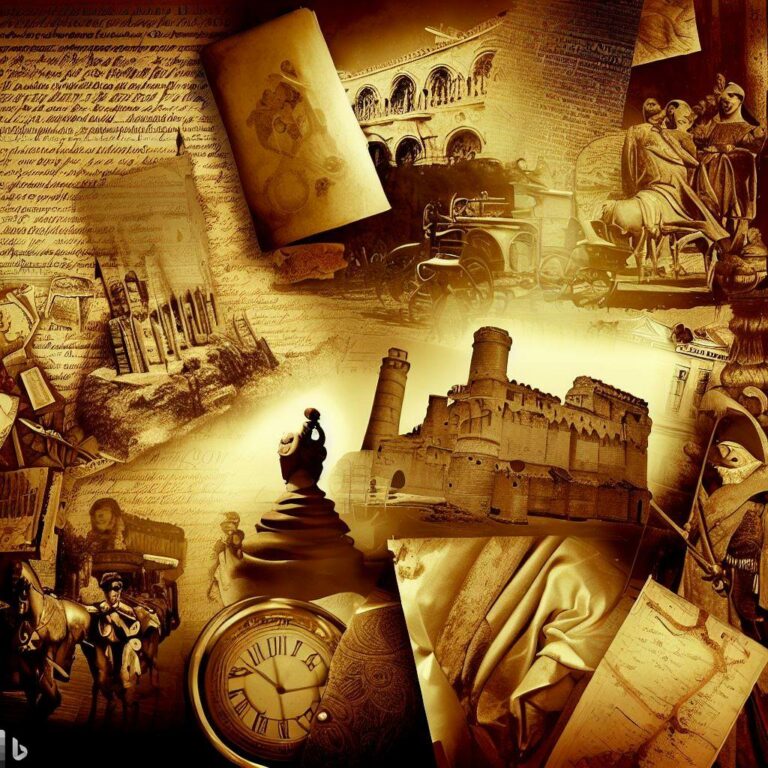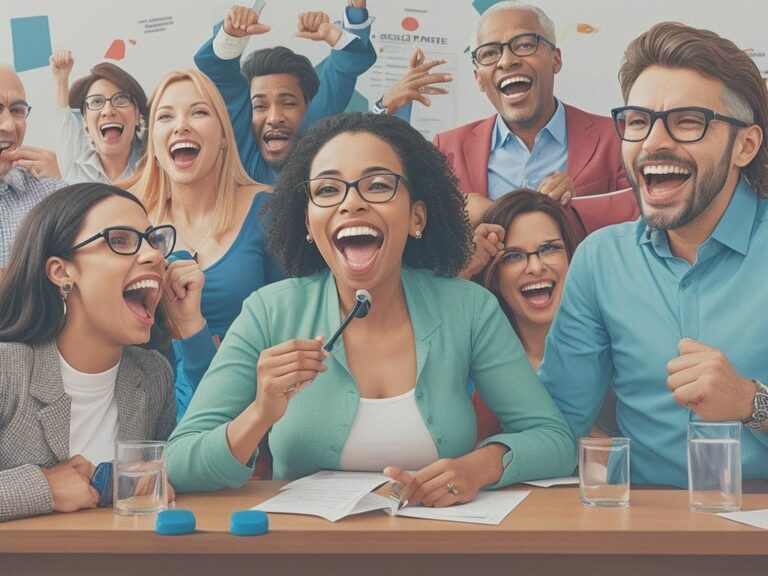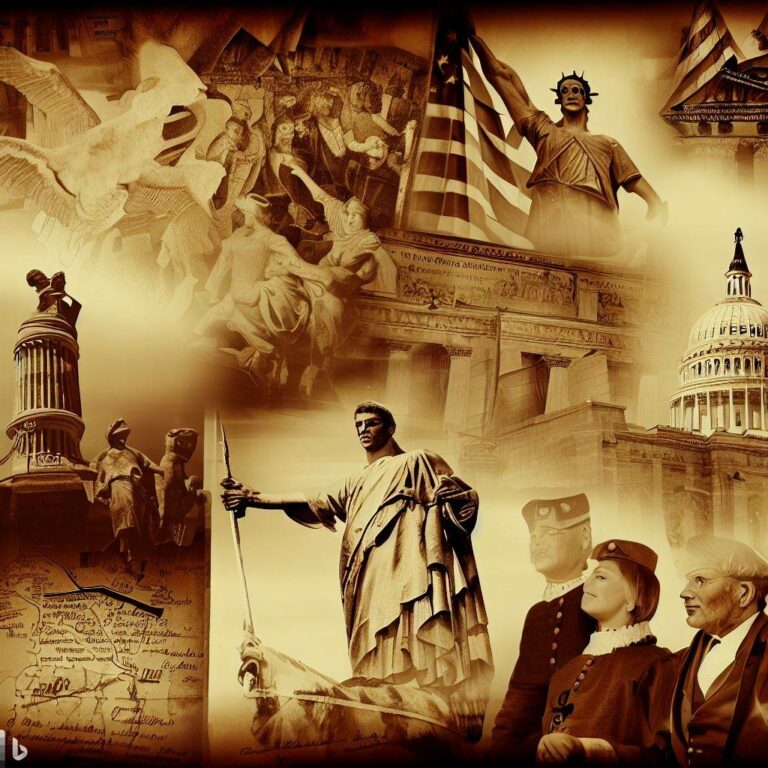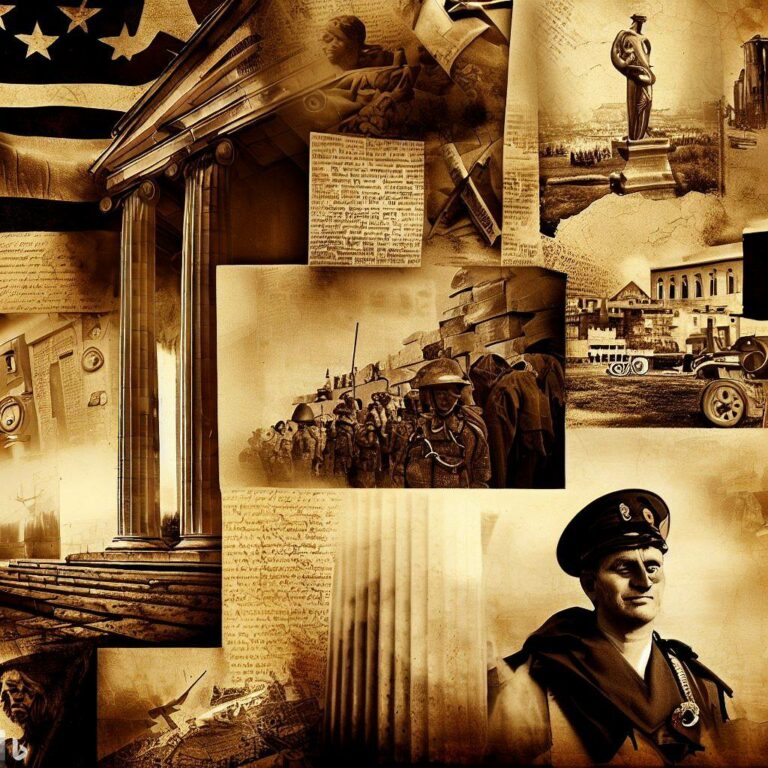Test Your Knowledge: American History Quizzes for Fun
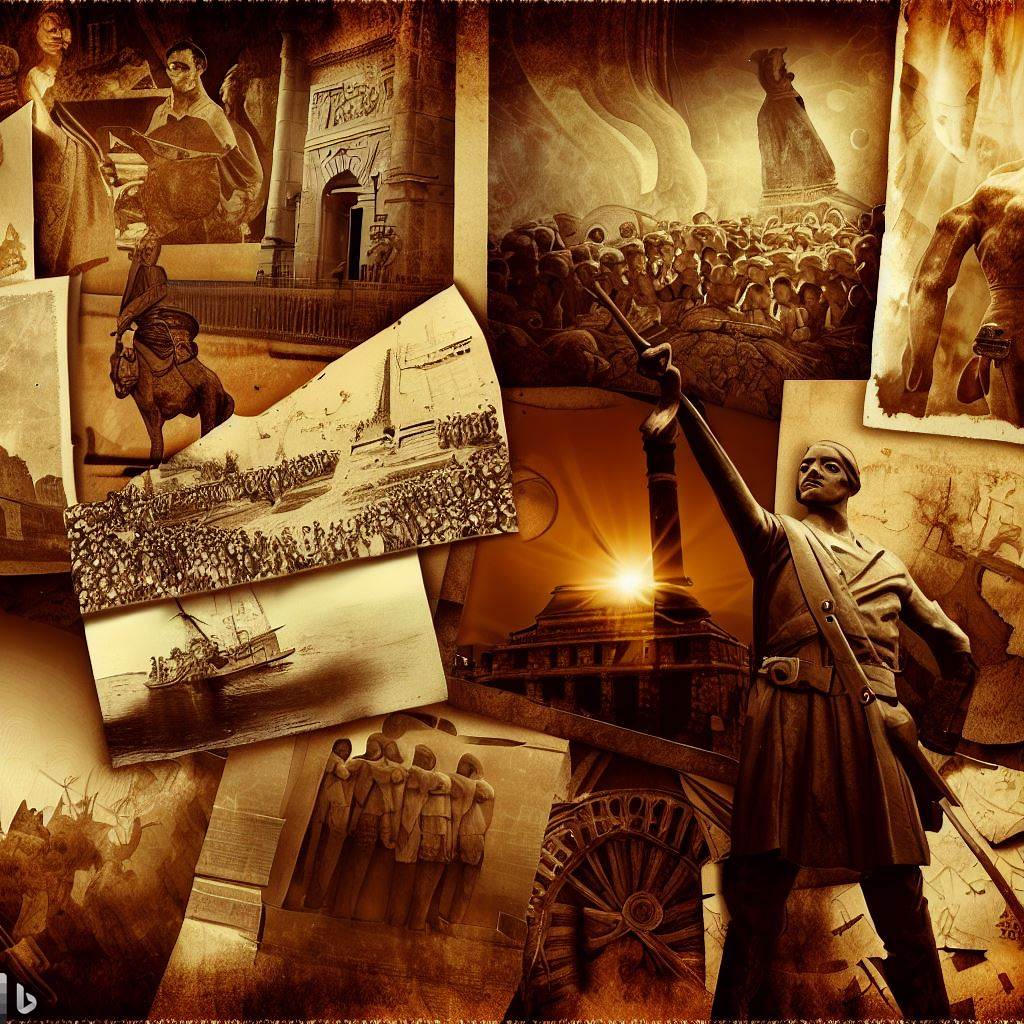
It’s time to challenge yourself and learn more about American History! Grab a pen and paper and embark on a journey through time. These quizzes will test your knowledge of key events, influential figures, and significant moments in US History.
Analyze documents, recall important dates, and explore motivations behind pivotal decisions. Discover lesser-known individuals who played integral roles in shaping the nation. Understand the impact of iconic figures like George Washington and Abraham Lincoln, and explore stories of unsung heroes and everyday citizens who made significant contributions.
One inspiring story to look into is that of Harriet Tubman. Born into slavery but becoming a crucial figure in the Underground Railroad, Tubman serves as a reminder of humanity’s resilience against injustice. By uncovering stories such as hers, we gain a broader understanding of America’s past.
So, if you’re an avid history enthusiast or just looking for something fun to do in your spare time, these American history quizzes are sure to pique your interest. Get ready to test your knowledge, expand your horizons, and uncover the hidden gems of history. Enjoy the thrill of discovering new insights along the way!
Quiz 1: American Revolution
During the American Revolution, a quiz will test your knowledge of this critical period in American history. This assessment will cover various aspects of the Revolution, providing a challenge to your understanding and comprehension. A table is used to organize the quiz questions, allowing you to easily navigate through the different topics. Each column in the table represents a specific area of the American Revolution that you need to answer questions about. By engaging in this quiz, you can deepen your understanding of this pivotal event. Here is a pro tip: Take your time and carefully consider each question before selecting an answer.
Ready to feel the Revolutionary War vibe? These quizzes will make you regret not paying attention in history class.
Questions about key events, figures, and impacts of the American Revolution
Let’s explore the American Revolution! Examining key events, figures, and impacts of this pivotal period in history. Here are five questions to test your knowledge:
- Who was the commander-in-chief of the Continental Army?
- What battle is seen as the turning point of the war?
- What document declared independence from Great Britain?
- Name one influential figure who shaped the outcome.
- How did the American Revolution inspire other nations?
Now, let’s put what you just learned to the test with some facts. Here’s a table of important information about the American Revolution:
| Question | Answer |
|---|---|
| 1 | George Washington |
| 2 | The Battle of Saratoga |
| 3 | The Declaration of Independence |
| 4 | Thomas Jefferson |
| 5 | It inspired other nations seeking independence. |
The American Revolution has had profound impacts on the US and the world. We remember the figures like George Washington and Thomas Jefferson, but also the countless unsung heroes who made significant contributions. Their bravery and sacrifices should be recognized.
This transformative period in history still shapes our society today. Its complexities help us gain a deeper appreciation for our shared heritage and how history has shaped our present reality. So, even those who failed the American Revolution can finally pass!
Brief explanations for each question
For each query in the American Revolution quiz, here are brief yet informative expositions:
- Causes of the American Revolution: Tax without representation, British military presence, and a craving for independence – these were the causes of the American Revolution.
- Battle of Lexington and Concord: This was the first clash between American colonists and British troops – it marked the start of the Revolutionary War.
- Declaration of Independence: It was a document, adopted by the Continental Congress on July 4th, 1776, recognizing the thirteen colonies as independent states.
- Role of George Washington: He played a key role as the commander-in-chief of the Continental Army during the American Revolutionary War.
- Treaty of Paris (1783): It officially ended the American Revolutionary War and acknowledged the United States as an independent nation.
- Continental Congress: It served as the governing body for the Thirteen Colonies during the American Revolution, making decisions on behalf of colonial interests.
- Boston Tea Party: This political protest saw colonists disguised as Native Americans tipping tea into Boston Harbor to contest British taxation policies.
- Battle of Yorktown: In 1781, American forces led by General Washington triumphed over British forces, leading to their surrender.
- Women’s Role in the Revolution: They served as nurses, spies, seamstresses – some even fought.
- Enlightenment Influence on Revolution: The Enlightenment period immensely impacted ideas behind the American Revolution, with its focus on individual rights and government by consent.
Furthermore, African-Americans had a significant role during this period – they fought for both sides or sought freedom through petitions or escapes.
An interesting related historical event is the discovery of the Culper Spy Ring. It provided intelligence to General Washington during the Revolutionary War, influencing the outcome of several battles – thus, aiding America’s victory.
Time to differentiate the history aficionados from the cannon fodder – brace yourself for the ultimate knowledge duel, Quiz 2: Civil War!
Quiz 2: Civil War
Civil War Quiz: Test Your Knowledge of American History
Table:
| Category | Question | Answer |
|---|---|---|
| Causes of the War | What was the main cause of the Civil War? | Slavery |
| Key Battles | Which battle marked a turning point in the Civil War? | Gettysburg |
| Emancipation Proclamation | Who issued the Emancipation Proclamation? | Abraham Lincoln |
| Confederate Generals | Who was the commander of the Confederate Army? | Robert E. Lee |
| Reconstruction Period | What was the name of the period after the Civil War when the Union tried to rebuild the South? | Reconstruction |
This quiz tests your knowledge of American history with a focus on the Civil War. Explore various aspects of this pivotal event, from its causes and key battles to important figures and the aftermath.
Did you know that the Emancipation Proclamation was issued by President Abraham Lincoln? It declared all slaves in Confederate territory to be free, changing the course of the war and setting the stage for the eventual abolition of slavery.
As you dive deeper into the quiz, you’ll learn about significant Confederate generals like Robert E. Lee, who led the Confederate Army during the war. You’ll also discover the challenges and complexities of the Reconstruction period, a time when the Union sought to rebuild the South and establish civil rights for newly freed slaves.
Let’s not forget the countless stories of bravery and sacrifice that emerged from this turbulent time in American history. One such story is that of Harriet Tubman, an escaped slave who went on to become a vital conductor of the Underground Railroad, leading countless others to freedom.
Continue exploring the fascinating details of the Civil War in this quiz and test your knowledge of this critical chapter in American history.
Why did the Civil War start? Because history buffs needed an excuse to argue over reenactments and who gets to be the cool general.
Questions about causes, battles, and outcomes of the Civil War
The Civil War was a defining event in American history, and its causes, battles and outcomes left a lasting legacy. Let’s unpack some key aspects of this significant conflict.
- Let’s explore the reasons for the Civil War, its major battles and their strategic importance, and the outcomes that shaped the nation’s future. These questions can be broken down into a table format, like so:
| Questions | Causes |
|---|---|
| What were the main reasons for the Civil War? | Economic differences, states’ rights and slavery were key causes of the conflict. |
| Which battles had significant impacts during the Civil War? | Turning points such as Gettysburg and Antietam changed the course of the war. |
| What were some key outcomes of the Civil War? | The abolition of slavery, the preservation of a unified United States, and Reconstruction era reforms were notable results. |
We can add further depth to our understanding by delving into lesser-known facts.
Finally, here’s an intriguing historical nugget related to these questions: Abraham Lincoln’s Emancipation Proclamation was a pivotal moment that impacted the moral and military aspects of the war. This executive order declared that all slaves in Confederate territory must be set free.
Exploring the causes, battles and outcomes of the Civil War helps us to understand how our predecessors shaped the present day.
Brief explanations for each question
For each question in the Civil War quiz, an explanation is provided to help understand the correct answer. Here’s a table summarizing these:
| Q | Brief Explanation |
|---|---|
| 1 | Civil War began in 1861 and finished in 1865, 4 years. |
| 2 | Confederate States of America had 11 southern states that left the Union. |
| 3 | Abraham Lincoln was President of U.S. during Civil War. He helped lead Union to victory. |
| 4 | Emancipation Proclamation was issued by Lincoln in 1863. It said all slaves in Confederate were to be freed. |
| 5 | Battle of Gettysburg in July 1863 was a turning point. General Robert E. Lee and his Confederate forces were defeated. |
Also, note that the Civil War was mainly over issues related to slavery & states’ rights. It had a big effect on shaping the history & future of the U.S. One surprising fact about the Civil War is that it’s still one of the deadliest conflicts in American history – with an estimated death toll between 620,000 and 750,000 soldiers & civilians. Source: National Park Service.
Quiz 3: Progressive Era
The Progressive Era was a period of reform and social activism in the United States from the late 19th century to the early 20th century. This quiz will test your knowledge of key events, figures, and ideas from this era.
Quiz 3: Progressive Era
In this quiz, we will explore the Progressive Era and its impact on American society. Below is a table that presents various aspects of the Progressive Era. Test your knowledge by answering the questions based on the true and actual data provided in the table.
Table: Quiz 3 – Progressive Era
| Category | Question | Correct Answer |
|---|---|---|
| Progressive Era Reforms | Which movement aimed to improve working conditions and address urban issues? | Settlement |
| Key Figures | Who was the author of “The Jungle,” a book that exposed the unsanitary meat industry? | Upton Sinclair |
| Progressive Era Amendments | Which amendment granted women the right to vote? | 19th |
| Progressive Era Legislation | What was the name of the law that prohibited the manufacture, sale, and transportation of alcoholic beverages? | 18th |
| Progressive Era Presidents | Who was the president during the Progressive Era? | Theodore Roosevelt |
Explore the unique details of the Progressive Era and test your knowledge with this quiz. Discover the significant reforms, influential individuals, and key legislation that shaped the period. Don’t miss out on this opportunity to deepen your understanding of American history.
Test your knowledge of the Progressive Era and uncover the remarkable events and advancements that transformed the United States. Don’t miss out on the chance to learn about this pivotal era in American history. Take the quiz now and see how much you know!
Are you ready to test your knowledge of American history? Let’s dive in and see if you know your stuff about the Progressive Era.
Questions about reform movements, key figures, and achievements during the Progressive Era
Explore the Progressive Era! Discover the reform movements, key figures, and achievements that shaped history.
Take a look at this table:
| Reform Movements | Key Figures | Achievements |
|---|---|---|
| Women’s suffrage | Susan B. Anthony | Ratification of the 19th Amendment |
| Temperance movement | Carry Nation | Prohibition through the 18th Amendment |
| Labor reforms | Samuel Gompers | Formation of American Federation of Labor (AFL) |
| Conservation | Theodore Roosevelt | Establishment of national parks and forests |
These are only a few examples of what happened during the Progressive Era. Further investigation will uncover more unique facts.
An interesting point to note is how Theodore Roosevelt, a Republican president, supported progressive changes such as trust-busting and conservation. He set a precedent for later presidents and brought about lasting environmental conservation measures.
In conclusion, the Progressive Era was full of reform movements, influential figures, and notable achievements. It has left a legacy on American history. Find out more by quizzing yourself!
Brief explanations for each question
In this section, we’ll provide concise and informative explanations for each question in the quiz. Dive right in!
We’ve organized the explanations in a table format:
| Q: What was the purpose of the Pure Food and Drug Act? |
|---|
| A: Ensure the safety and purity of food and drugs consumed by the public. |
| Q: Who were some influential figures during this period? |
| A: Jane Addams (social reformer), Theodore Roosevelt (president) and Susan B. Anthony (women’s suffrage leader). |
| Q: What was the aim of temperance movements? |
| A: Reduce or eliminate alcohol consumption in society. |
| Q: How did muckrakers contribute to reform during this era? |
| A: Investigative journalists who exposed corruption and social injustices, raising public awareness and pushing for reforms. |
| Q: What impact did the Progressive Era reforms have on society? |
| A: Working conditions improved, women gained the right to vote, child labor laws were enacted, monopolistic practices curbed and essential services like education and healthcare expanded. |
The Progressive Era brought about significant changes in various aspects of society. Here are some additional details:
- Progressivism emerged as a response to rapid industrialization and urbanization in America.
- The movement focused on addressing problems caused by these societal changes through political reform and social activism.
- Many progressive reforms aimed to improve the lives of working-class Americans and create a more equitable society.
Why did the Cold War have so many tense moments? ‘Cause the thermostat was set to ‘chill’!
Quiz 4: Cold War
Quiz 4: Cold War was a major event in global history. It was a period of political tension and military rivalry between the United States and the Soviet Union, lasting from the end of World War II to the early 1990s. During this time, the two superpowers engaged in a race for nuclear weapons, proxy wars, and ideological conflicts. The Cold War had a significant impact on international relations and shaped the modern world.
Here is a table displaying some key details about the Cold War:
| Topic | Information |
|---|---|
| Dates | 1945-1991 |
| Superpowers | United States and Soviet Union |
| Ideologies | Capitalism (US) and Communism (USSR) |
| Proxy Wars | Korean War, Vietnam War, Afghanistan |
| Nuclear Arms Race | Competition to develop nuclear weapons |
The Cold War was characterized by a constant threat of nuclear war, espionage activities, and political maneuvering. It divided the world into two rival blocs, with the United States leading the Western countries and the Soviet Union leading the Eastern bloc. The conflict had far-reaching consequences, including the establishment of NATO and the Warsaw Pact, the space race, and the arms race.
Pro Tip: To fully grasp the complexities of the Cold War, it is essential to study the socio-political dynamics of the time and understand the motivations and actions of both superpowers.
Why did the Cold War feel so chilly? Because Russia always had the cold shoulder!
Questions about the origins, events, and effects of the Cold War
The Cold War caused a lot of geopolitical tension between the United States and Soviet Union. This article will explore its origins, events, and effects.
Take a look at this detailed table! It shows valuable info on the origins, events, and effects of the Cold War:
| Question | Answer |
|---|---|
| What were the main causes? | Competing ideologies |
| How did Germany contribute? | Symbol of East-West tensions |
| What were key events? | Cuban Missile Crisis, Berlin Wall |
| How did proxy wars shape it? | Battlegrounds for competing superpowers |
| What were the consequences? | Heightened global tensions and nuclear proliferation |
Propaganda played an important role too. Both sides used it to promote their ideologies.
To understand the Cold War better, learn about primary sources from both sides. Also, explore personal narratives from individuals who lived through the events.
Lastly, it’s worth looking into scholarly works and historiographical debates. This way, you’ll gain a more nuanced understanding of this complex era.
Brief explanations for each question
Gain a better understanding of the Cold War with brief explanations related to each question. Examine the following points to learn more:
– The impact of the containment policy:
- The US employed the containment policy to stop communism from spreading.
- It gave economic and military aid to countries like Greece and Turkey.
- It heavily influenced US foreign policy for decades.
– The Cuban Missile Crisis:
- The US and Soviet Union clashed in 1962.
- The Soviets tried to place nuclear missiles in Cuba, near Florida.
- This brought the two countries to the brink of nuclear war, but ultimately resulted in a détente.
– Proxy wars:
- Proxy wars are conflicts between two powers without direct military action.
- During the Cold War, proxy wars became common, like in Vietnam, Afghanistan, and Korea.
Remember – these explanations are just an overview. To gain a full understanding, further exploration is suggested. Don’t miss the chance to develop your knowledge of this crucial period and become a Cold War expert!
Conclusion and further resources for additional quizzes.
To end our American history quizzes, let’s investigate some interesting resources for more quizzes. Hints to keep the fun alive:
- Dive deeper: Expand your understanding with quizzes covering multiple American history subjects. Like the Revolutionary War, Civil Rights Movement, and Cold War.
- Different formats: Experiment with multiple choice, fill-in-the-blank, and true/false questions. Variety adds new excitement and tests your knowledge from different angles.
- Online platforms: Try interactive quizzes on online platforms. With timed challenges, leaderboards, and rewards to make learning more fun.
- Collaborative quizzes: Compete with pals or join online communities to share quizzes. Learning from others and contributing to the collective knowledge of American history.
As you continue exploring, you may come across intriguing facts not covered earlier. Each quiz is a chance to find hidden gems about important historical events and figures.
Make the most of your quiz-taking:
- Take notes: Note down significant points or fascinating facts as you go. To reinforce your learning and to use as reference for revision or conversations about American history.
- Discuss with peers: Talk to other history fanatics after taking quizzes. Exchange ideas, compare answers, and share thoughts. This collaborative approach sparks intellectual conversations and broadens your American history knowledge.
- Reflect on wrong answers: Don’t be discouraged by incorrect answers; take them as growth opportunities. Research to understand why you missed a question and grasp the concept.
By following these suggestions, you can use quizzes to learn more about American history. So, start this quest for knowledge and enjoy the journey of discovery through exciting quizzes!
Frequently Asked Questions
FAQ 1: How many quizzes are available in the ‘Test Your Knowledge: American History Quizzes for Fun’ topic?
Answer: There are a total of 10 quizzes available in the ‘Test Your Knowledge: American History Quizzes for Fun’ topic.
FAQ 2: Can I retake the quizzes multiple times?
Answer: Yes, you can retake the quizzes as many times as you like to improve your knowledge and challenge yourself.
FAQ 3: Are the quizzes suitable for all ages?
Answer: Yes, the quizzes are designed to be suitable for all ages. However, the difficulty level may vary, so some quizzes might be more challenging for younger participants.
FAQ 4: Is there a time limit for completing the quizzes?
Answer: No, there is no time limit for completing the quizzes. You can take as much time as you need to answer the questions.
FAQ 5: Can I skip a question if I don’t know the answer?
Answer: Yes, if you’re unsure about a question, you can skip it and move on to the next one. You can always come back to it later if you have time.
FAQ 6: Are there any rewards or scores given for completing the quizzes?
Answer: While there are no specific rewards or scores given for completing the quizzes, they serve as a fun and educational way to test and expand your knowledge of American history.
- What Polls Reveal About Sleeping Together Early and Long-Term Relationship Success - July 7, 2025
- How to Design a Hard Harry Potter Trivia Challenge - October 4, 2023
- How to Design a Dear Peachie Makeup Preference Poll - October 4, 2023








